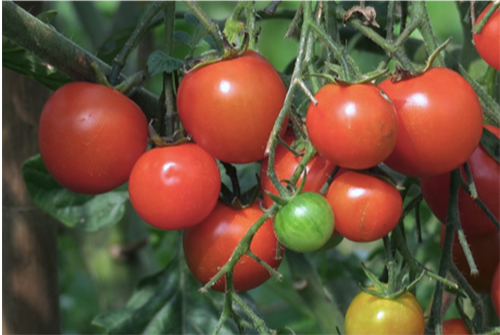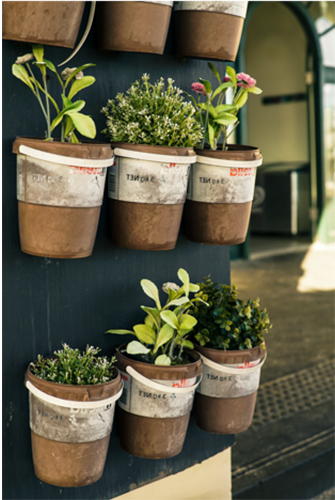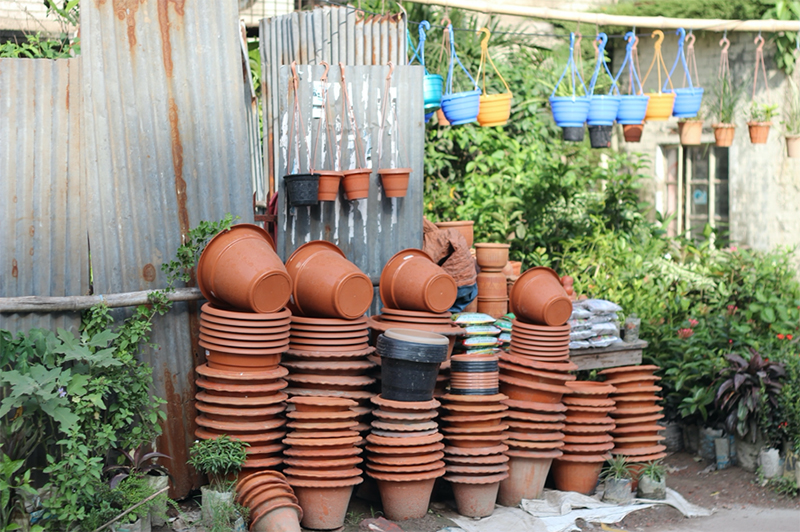It’s an undeniable luxury: there is surprisingly never a shortage of tomatoes and other exotic vegetables or fruit in the supermarket. Although – it might not be that surprising for most people, because we got used to it a long time ago. Even if it is biting cold or persistent dryness outside, we can always find everything our heart could desire between the sheltered shelves of grocery stores: avocados, bananas, berries or simply tomatoes.
Even if the external appearance of the tomatoes in the supermarket does not show where they come from, how they were planted or stored, the differences in terms of the CO2 footprint could not be more significant. In this respect, it is quite clear that not all tomatoes are the same! But they all have one thing in common: they are clear summer vegetables, because they need a lot of light and warmth to grow.
Summer tomato vs. winter tomato
Greenhouse tomatoes bought outside the summer season therefore have a particularly large CO2 footprint. One kilo of tomatoes is easily burdened with over 2.7 kilos of CO2 (source: eaternity). If you buy a kilo of local tomatoes in winter, you have to imagine the following: with the CO2 generated in the production of these tomatoes, 550 balloons could be filled with CO2! So you either buy the pig in a poke or the CO2 in the tomato!

You may be thinking now, but domestic tomatoes in winter should still have a better CO2 balance than those that come from Spain via ground transport?
However, this is not true: such tomatoes have a CO2 load of 0.546kg per kilo in winter and summer, which is over 2kg less than one kilo of winter tomatoes from Switzerland. However, with 0.316kg CO2, a kilo of seasonal tomatoes from the region performs best and is therefore clearly preferable (source: eaternity).
The adventure of growing your own tomato plant
But there is actually a better way to improve the climate and above all to be more adventurous! What would happen if we planted our own tomatoes? Anyone who now thinks that they can’t do that without a garden, is mistaken. Especially the small, popular cherry tomatoes are especially well suited for growing on the balcony.
In fact, such a tomato plant could be the beginning of your first garden. There are many good tips and tricks on how to do this, both on the Internet and in bookshops. Marie-Luise Kreuter’s “Der Biogarten” is particularly recommendable, as it has answers to all of the questions you could possibly have.
Supporting climate and environment with gardening
And the best part? Having your own little garden is a sure way to save CO2: It’s a very simple way to have access to the most regional and seasonal food products, with no transportation and no packaging.
But a garden has many more advantages: It also provides a constant home for animals and insects on which our ecosystem is extremely dependent on. Nearly 80% of crops and wild plants are pollinated by bees and other insects! In addition, a vegetable garden can also improve the quality of the soil enormously. Especially in cities, the soil is not suitable for gardening initially, but rather must first be nurtured. It is important, however, that peat-free soil is always used, as this helps to save carbon dioxide. A healthy soil also attracts earthworms, which in turn improve the soil further. On the one hand earthworms feed on dead plant remains, on the other hand earthworms loosen the earth and their excrement is particularly good soil, better even as compost!
Speaking of compost: A garden of your own is also ideal for composting! This way, all organic waste can be reused and improve the soil as home-made compost. Once again, this means: less waste, less packaging and less travel, which means even less CO2 emissions! A vegetable garden is therefore a genuine gain for the climate and the environment!

No opportunity for home gardening?
If you don’t have a garden or balcony where you can plant or compost, you don’t have to sit idly, because there are opportunities to act at any time and anywhere. If you would like to plant something and establish greenery, you can, for example, simply grow herbs or flowers on the windowsill. But you can also find out if there is a possibility to plant trees, bushes, flowers or lavender in front of the house. This way the greenery can also become a neighbourhood project. But maybe you will find someone with a garden who is happy for a helping hand. Just ask around!
If you don’t have any of these gardening options, or maybe you just don’t like gardening, you can still go shopping at the local market, where mostly seasonal produce from the area is sold. This is another easy way to reduce transport and packaging of vegetables and to support local farmers who are trying to grow food sustainably.
Whether in the garden, on the balcony, windowsill, in front of the house or at the market, everywhere you can live in a more climate-friendly way through small, conscious changes and decisions. For the winter months, it’s all about finding alternatives to tomatoes, trying out seasonal vegetables or simply being creative. If, for example, your own tomato cultivation is successful in summer, you may have so many that you can pickle, dry or process some into sugo and thus make them last well into winter.

